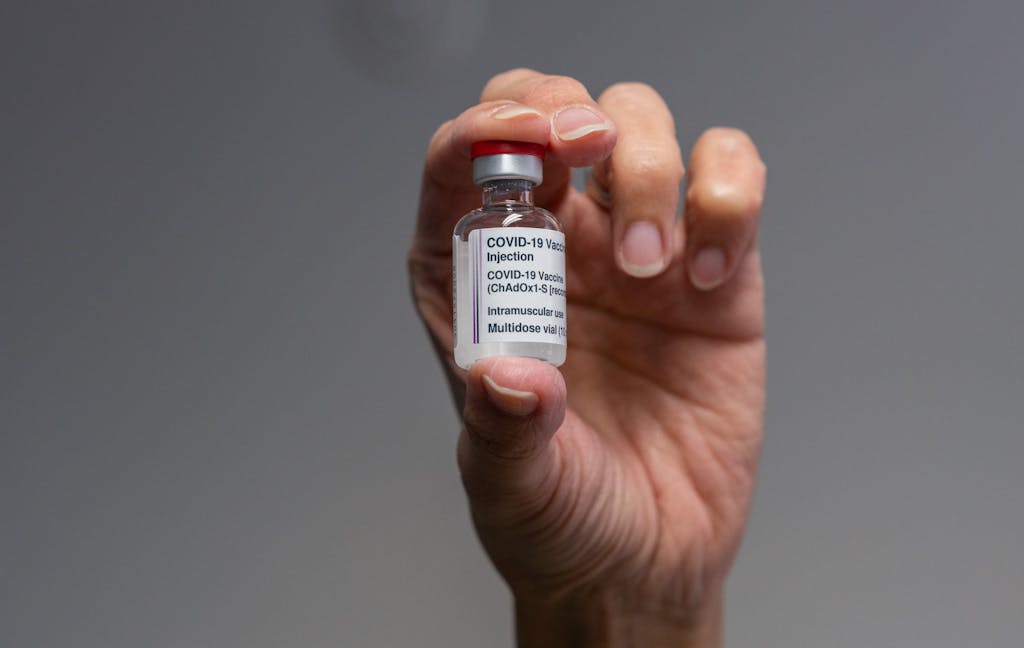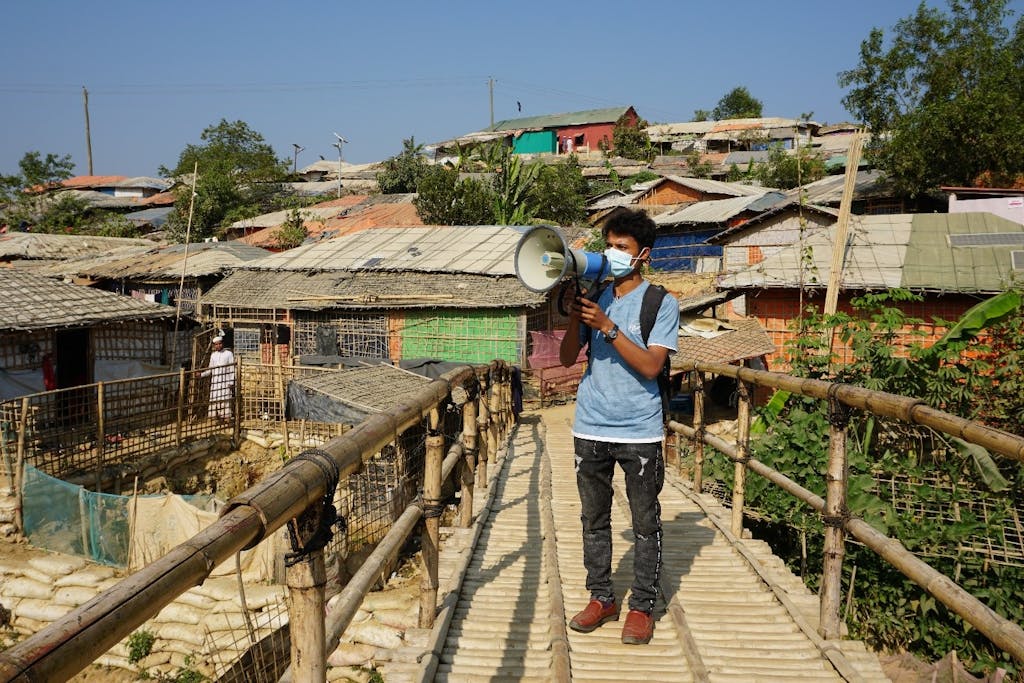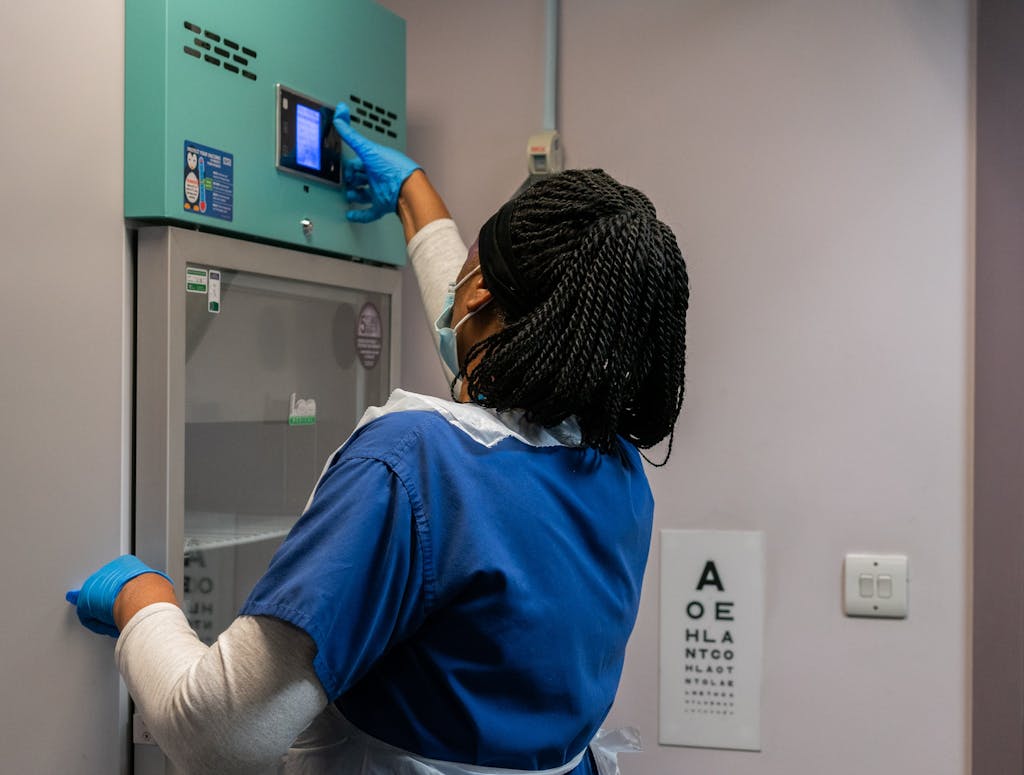The World Health Organization is at the center of the largest simultaneous global vaccine drive in history, where speed and precision are of the essence to beating the COVID-19 pandemic.
**Please note that this interview was conducted on Jan. 25, 2021, and given the rapidly evolving nature of the COVID-19 virus, new or updated information may have emerged since then. This piece reflects the context and facts available at the time of the interview.**
With lives, resources, and patience on the line, the global COVID-19 vaccine distribution process is the performance of a lifetime with no opportunity — or time — for rehearsals. The conductor at the center of it all is the World Health Organization (WHO), serving at once as medical encyclopedia, regulator, and policymaker.
“This vaccine introduction program is unlike any ever before in any country around the world,” said Dr. Katherine O’Brien, WHO’s director of the Department of Immunization, Vaccines and Biologicals. “There is no program like this in its speed, its dimension, its worldwide, simultaneous nature.”
A few months into the pandemic, WHO developed a target product profile guide, outlining the minimum attributes of a safe, effective vaccine candidate. Currently, more than 200 vaccine candidates are being developed and tested around the world, but not all of them meet WHO’s science-driven prerequisites for controlling the pandemic. In addition to the target profile, the vaccine candidates — tested in different labs and evaluated by varying regulators around the world — have to meet rigorous safety requirements to receive WHO’s final stamp of approval, vouching for their efficacy, safety, and quality.

“I can’t overemphasize the importance of that: We have to uphold the absolute highest international standards,” said O’Brien. “The trade-off between benefit and risk has to be so clear and driven by data in terms of benefit because vaccines, by their nature, are given to healthy people.”
Even after clinical trials, the vaccines are monitored on an ongoing basis to ensure they keep meeting safety standards and people aren’t experiencing significant side effects. The scientific community keeps a careful eye on each vaccine, monitoring its progression for any red flags or issues that may not have surfaced previously.
O’Brien explains: “With the car you drive, you would expect that the car manufacturer has a department of safety that is continuously monitoring the cars that it has produced and is continuously improving the safety of its car. The same is true for vaccines.”
In addition to signing off on vaccines, WHO helps guide countries through the complicated process of distribution amid a global shortage of doses. Much of this requires a deep consideration of ethical issues: Which segments of society should get vaccinated first? Does a country have the responsibility to vaccinate vulnerable noncitizens within its borders such as refugees?
“It’s not very efficient or a good use of people’s time for 194-plus countries to all be starting from a blank piece of paper,” said O’Brien. “So WHO provides guidelines and recommendations on all the elements that have to be thought about and the decisions that have to be made.”
To advise this work, WHO relies on its Strategic Advisory Group of Experts on Immunization (SAGE), which is composed of international physicians, academics, and global health experts. Different country contexts may necessitate varying approaches, but SAGE encourages all plans to be guided by six values: human well-being, global equity, reciprocity, equal respect, national equity, and legitimacy. While its guidance does not legally bind countries, it is an important starting point as everyone grapples with these questions at the same time.
From start to finish, vaccine development and distribution operations are precise and meticulous and allow very little margin for error. Scrupulous planning is the key to securing public trust, O’Brien said. No detail is too small for health experts who have to consider everything from how many households need to be served to the exact timing that vaccines have to be placed in coolers for transportation.
“These are the things that really instill the confidence of families and communities,” said O’Brien. “When something new is being offered, that it’s being offered on time at the time and place where they expected it. And with a quality of service that instills confidence.”
Getting from vaccine hesitancy to vaccination
Even while WHO diligently works to ensure that vaccines are safe and effective for public use, many people are hesitant for a variety of reasons including worries about side effects; the unprecedented speed with which the vaccines have come online; and confusion due to an ever-shifting information landscape, much of it filled with conspiracy theories and misinformation.
In other cases, people are worried about getting the vaccine because of mistrust. In the United States, for example, the virus has had a disproportionate impact on some racial minorities, with data showing outsized rates of illness and death among certain demographics compared with their share of the population. Existing vaccine hesitancy is fueled by mistrust in medical institutions, rooted in centuries of racial inequality compounded by ongoing structural inequalities in health access, education, and wealth, leading to poor health outcomes.
To address inequities such as these across countries globally, international organizations are working on restoring trust in science and health institutions. In its Verified initiative, for example, the United Nations encourages the public to pause before circulating unconfirmed information. It also released a communications guide with tips on how to help communities overcome vaccine hesitancy and to cultivate their trust in the process.
“We really have to make sure that the rollouts go smoothly in a way that continues to build confidence in the vaccines, given all the misinformation, conspiracy theories, and just completely inaccurate information about these products,” said O’Brien. “We don’t want to do anything that would undermine the confidence that people have and the hope they have in these vaccines which have been shown to be safe and highly effective.”

Sometimes, the messenger matters more than the message. As part of its ongoing information dissemination efforts and infodemic response, WHO relies on community leaders and local groups to take the vaccine information it provides and tailor it to their respective contexts. These efforts build on decades of similar approaches that WHO has used to roll out vaccines to prevent polio, measles, and other diseases. The right messenger has an intimate understanding of the local community, culture, and approach that would resonate and make the difference in whether or not someone decides to take an available vaccine.
For a public-facing organization such as WHO, part of this trust-building exercise means reiterating its commitment and action on securing global vaccination for everyone, everywhere, regardless of a country’s ability to pay.
No end to the pandemic without equitable distribution
While it is indeed good news that there are already several effective vaccines on the market, the bad news is that this won’t necessarily end the pandemic unless the actual distribution is more equitable between high-income and low- and middle-income countries. Even within countries, there have been reports that not everyone has been incorporated into national vaccination plans, with refugees, stateless people, and asylum seekers at risk of being left behind.
Global leaders including WHO Director-General Dr. Tedros Adhanom Ghebreyesus and United Nations Secretary-General António Guterres have repeatedly sounded the alarm about the dangers of vaccine nationalism. In a recent op-ed, Tedros wrote that rich countries, while comprising only 16% of the world’s population, have already purchased 60% of available vaccine supplies. Painting a grim picture, he asserted: “Vaccine nationalism combined with a restrictive approach to vaccine production is in fact more likely to prolong the pandemic—which would be tantamount to medical malpractice on a global scale.”
Meanwhile, COVAX, an initiative co-led by WHO, Gavi, and the Coalition for Epidemic Preparedness Innovations, is the only mechanism currently in place to deliver vaccines equitably to low- and middle-income countries. COVAX is on track to deliver on its goals. Thanks to its significant partnership, COVAX has enabled manufacturer deals and dose-sharing, coordination to achieve clarity on global and regional supplies, country readiness preparation, as well as secure additional much-needed funding. Because of these efforts, the world now has its clearest pathway yet to ending the crisis stage of this pandemic globally with the equitable rollout of safe, effective, and accessible COVID-19 vaccines.
The beginning of 2021 will be crucial as COVAX begins vaccine roll-out to low- and middle-income countries in February. In addition to needing to secure more doses and more funding, complexities like regulatory approvals, readiness and capacity, supply chain, delivery and logistics all lie ahead. Complicating the matter further, COVAX partners have to take into account supply shortages, regulatory approvals, and logistical hurdles such as whether countries have the infrastructure for cold supply chains (a challenge for many countries and particularly low-income settings). However, such issues are a challenge for all countries, regardless of income level, which is why WHO is calling on more sharing of technologies and intellectual property to speed up the manufacturing process to overcome supply hurdles.

“The cold chain planning is a critical element because vaccines have to be deployed with attention to the temperature that they have to be maintained at in order to retain their potency,” said O’Brien. “You can’t make a mistake on that.”
The calls for global solidarity for equitable vaccine delivery have frequently centered on moral appeals but are increasingly urging countries to look at the economic rationale and public health ramifications if low-income communities are not able to get vaccinated at the same time as those that can afford it.
“If the virus is allowed to spread like wildfire in the Global South, it will inevitably mutate — it is mutating — becoming more transmissible, more deadly, and, eventually, more resistant to vaccines, ready to come back to hound the Global North,” Guterres cautioned.
Recent studies have also calculated the economic cost that countries could incur should they continue to pursue an uncoordinated approach to vaccine distribution. The world risks global GDP losses of as much as $9.2 trillion in 2021 alone with half of that cost being incurred by high-income countries if they focus only on vaccinating their own populations, compared with $38 billion to fully fund the Access to COVID-19 Tools (ACT) Accelerator, the WHO-led initiative to provide equitable access to COVID-19 tests, treatments, and vaccines.
In the meantime, while global vaccination efforts are initially largely prioritizing the elderly and essential workers, experts are urging the rest of society to remain vigilant and adhere to safety precautions to keep the virus at bay.
“Just because we’re starting a vaccine program is absolutely not the time to take our foot off the pedal for all of the other interventions we have in the toolbox to crush the transmission of this pandemic,” said O’Brien. “We are all going to have to be patient in this, because this is not a flip of a switch.”
CONSIDER A DONATION TODAY
Every donation makes a difference. Support WHO’s lifesaving efforts to respond to the COVID-19 pandemic by giving to the COVID-19 Solidarity Response Fund.
You can learn more about WHO’s lifesaving work around the world here and find details of how funds are used to support COVID-19 efforts here.
Featured Photo: WHO



 View All Blog Posts
View All Blog Posts